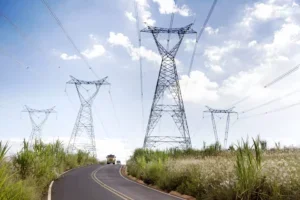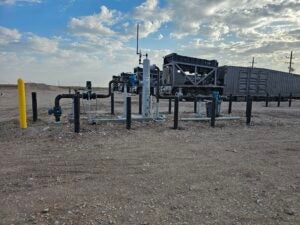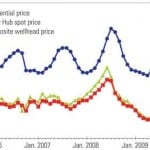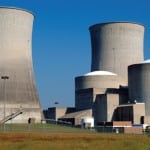In a speech at the U.S. Chamber of Commerce, Southern Co. Chairman, President, and Chief Executive Officer Thomas Fanning, who took the helm at Atlanta-based Southern December 1 upon the retirement of former CEO David Ratcliffe, said in mid-April, "the existing coal industry is under attack by some in America. Decisions are being made that will limit our ability long term to use coal, and therefore, negatively impact the nation’s economic well-being."
Fanning singled out for criticism the Environmental Protection Agency’s (EPA’s) proposed regulations to limit utility hazardous air pollution (HAP). The HAP proposal, released by EPA in March, would establish a "maximum achievable control technology" standard for coal- and oil-fired plants and require affected plants to install controls within three years, with a possible one-year extension.
"It’s complex," said Fanning, whose company uses coal to produce 57% of its electricity. "It contains stringent limits and requirements that must be met in an unreasonably short time frame. It will be costly.
"Nationally, those energy costs could rise as much as 20 percent as a result of this proposed regulation. And reliability could suffer."
Fanning noted that the United States has 28% of the world’s coal resources—the largest amount of any country.
"We must place a high priority on developing solutions that preserve this critical energy resource for the future," he said. "We must do it in a way that provides a sensible balance of reliability, economic consequence and environmental impact."
Fanning also expressed caution—if not outright skepticism—about the feasibility of using natural gas to replace the output of older, less-efficient coal plants that likely will be shuttered if EPA finalizes the utility HAP rule and other regulatory initiatives in the pipeline that could make coal less attractive to utilities.
"Let’s face it," he said. "There are only a small number of companies that are able to undertake the development of new nuclear plants. Pending federal regulations have virtually declared a war on coal. As a result, much of our industry is rushing to natural gas-fired generation."
Gas Questioned
Fanning noted that the advent of hydraulic fracturing, or "fracking," technology—in which water and chemicals are pumped below ground at high pressure to fracture shale deposits to free gas trapped within the shale—has resulted in an unprecedented bounty of gas supplies in recent years that has sharply lowered prices.
But he cautioned that 90% of the gas that is being recovered today is extracted through the fracking process, which critics say threatens groundwater quality and may pose other environmental challenges.
"Then there’s infrastructure," Fanning said. "Do we have the pipelines in place today to meet the rising demand for natural gas and transport it to where it’s needed? At present, we don’t.
"And what about the price of natural gas in the years ahead? Not long ago, gas rose to $14.50 per million [British thermal units], or more than three times what it’s selling for today. Whatever you believe about the future price of natural gas, it’s reasonable to believe it will remain volatile.
"If that’s your only future generation resource, then that volatility will only increase and that’s not good for American business," he added.
Renewables Have Challenges
And while describing renewable energy technologies as "exciting" and having a clear role to play in meeting electricity demand, Fanning said renewables also have challenges. He noted that the best wind and solar resources often are located at substantial distances from load centers and thus will require significant investments in new transmission lines. Wind and solar also require backup generation to meet demand "when the wind doesn’t blow and the sun doesn’t shine," he said.
"Finally, there are questions whether the renewable sector can survive without artificial support in the form of government tax incentives," Fanning said. "Therefore, considering the consequences of the need for long-distance transmission, back-up generation and artificial cost subsidization, renewable technologies will likely have a marginal impact for some time to come."
Nuclear Remains Strong
Fanning, whose company is building the nation’s first new nuclear plant in 30 years at its Alvin Vogtle plant site near Augusta, Ga., urged patience as the nuclear industry and regulators digest the implications of the nuclear disaster at Japan’s Fukushima Daiichi nuclear complex, which was disabled by a massive tsunami after a catastrophic earthquake March 11.
"We can’t…let the events [in Japan] distract us from what we must do here," Fanning said. "Working closely with the [Nuclear Regulatory Commission] and other industry groups, we will take what we learn from Japan, look deeply into our own safety systems, take them through a rigorous review and implement improvements to ensure the highest levels of safety."
In brief remarks with reporters following his speech, Fanning said Southern and other nuclear utilities "will go through all of those issues, and at the end of the day, I just want to make people very clear that we need to be thoughtful about what happened there. We need to understand what happened following the tsunami, and then we need to understand what happened as a consequence of the actions that were taken at the Fukushima site."
He also suggested that a judicial consent decree that mandated the schedule for EPA’s issuance of the proposed and final HAP rule offers the possibility of extending the three-year compliance period.
"There are a host of approaches on what might be done here," he said. "For example, when the courts put the timeframes in place, they did suggest that this may be complex and if you need more time come back to us and we’ll perhaps consider that. We are perfectly happy and we have a long track record of working constructively with EPA and are perfectly happy to go back and support them to get more time to get a better solution."
—Chris Holly is a reporter for The Energy Daily, where the original version of this article appeared.










